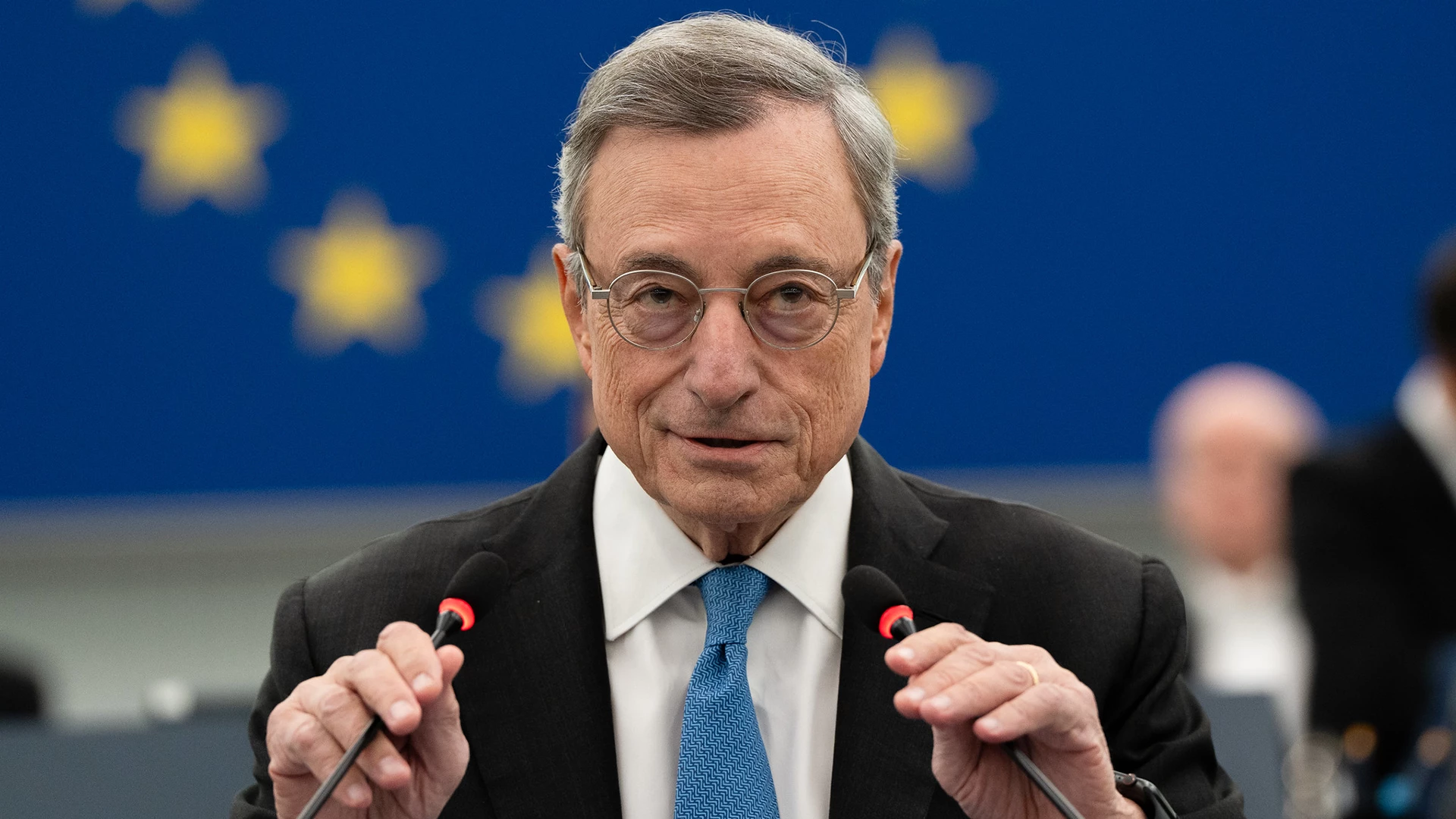
- Name:
- Helge J. Pedersen
- Title:
- Nordea Group Chief Economist
Helge J Pedersen
The crisis is taking its toll on the EU, which is lagging further and further behind the US and China in the great economic race. Now Mario Draghi has presented a plan that may save the situation.

"We will do whatever it takes to preserve the euro. And believe me it will be enough." These were the words of the former ECB president, Italian Mario Draghi, at a conference in London in July 2012. At that time, the sovereign debt crisis was raging in Europe. Greece had in principle gone bankrupt and several other countries, with Italy in the lead, were perilously close to throwing in the towel as well. This could have led to the dissolution of the euro, and a new and non-conventional monetary policy would have had to be devised in order to save the crumbling cooperation. The problem was solved by allowing central banks to buy government bonds on a large scale, while the monetary policy rate was slashed to rock bottom levels to save the most indebted states from being killed off by interest payments. The operation was successful, the patient survived and Mario Draghi became known as Super Mario, who actually saved the euro.
Now, more than 10 years later, it is the very same Mario Draghi who will once again try to come to the rescue. This is taking place in the form of a 400-page report, in which the EU's ailing competitiveness is dissected to the smallest detail. The report was published almost two weeks ago and it’s not cheerful reading. In fact, it paints a very bleak picture of the prospects for the European economy. The report thus highlights that Europe is falling too far behind the other two superpowers, the US and China. One of the main reasons is that productivity growth has been disappointingly weak since the beginning of the century, because it was not necessary to promote innovation and development to achieve a measurable, albeit modest, improvement in the living standards of the population. European companies got cheap energy from Russia, while the new and open China acted as a supplier of cheap import goods and generously demanded expensive export goods, and labour force trends were reasonable because more and more women joined the labour market.
But then came the abrupt awakening after the years of pandemic and war in Europe. Russia is now out of the picture as an energy supplier, China has turned its back on the liberal world order, and within a few years, demographics will become a serious drag on Europe's growth potential.
Words and actions can be miles apart in the EU, and it is far from certain that member states can agree on such a comprehensive proposal for a centralised industrial, trade and financial policy.
According to the Draghi report, the solution is to strongly promote productivity growth over the coming years. And it must be done in a way that ensures that the EU's fundamental values and climate objectives are respected. This should be realised through a completely new industrial policy with three special focus areas. Firstly, the innovation gap to the US and China must be closed on the tech front. Secondly, the green transition and competitiveness must be strengthened through a pan-European plan. And thirdly, Europe must secure its supply chains of critical raw materials by pursuing a very independent foreign policy, making alliances and agreements with resource-rich countries, as well as stockpiling to cope with periods of supply disruption. Lastly, Europe must coordinate its defence policy and make arms production more efficient in the light of the new security policy situation.
The plans are ambitious and require much greater coordination of industrial and trade policies, among other things, and the financing of far-reaching investment projects, which will amount to EUR 750 to 800 billion annually. In round numbers, this corresponds to twice Denmark's GDP in 2023!
Here, the super European Draghi proposes that the public sector takes the lead to ensure that the private sector will contribute on a large scale as a source of co-financing, and that funds are obtained from pan-European funds. The latter is controversial, as it basically involves an expansion of the common EU budget. But it has already been tested in connection with NGEU, the major post-pandemic reconstruction programme, and it may make creating a functioning capital markets union a little easier.
The report is worth reading, and the intentions are good. But all experience shows that words and actions can be miles apart in the EU, and it is far from certain that member states can agree on such a comprehensive proposal for a centralised industrial, trade and financial policy. Only time will tell whether Draghi will also be known by the new generation of Europeans as Super Mario.
See the latest Nordea Economic Outlook.


Sustainability
Amid geopolitical tensions and fractured global cooperation, Nordic companies are not retreating from their climate ambitions. Our Equities ESG Research team’s annual review shows stronger commitments and measurable progress on emissions reductions.
Read more
Sector insights
As Europe shifts towards strategic autonomy in critical resources, Nordic companies are uniquely positioned to lead. Learn how Nordic companies stand to gain in this new era of managed openness and resource security.
Read more
Open banking
The financial industry is right now in the middle of a paradigm shift as real-time payments become the norm rather than the exception. At the heart of this transformation are banking APIs (application programming interfaces) that enable instant, secure and programmable money movement.
Read more